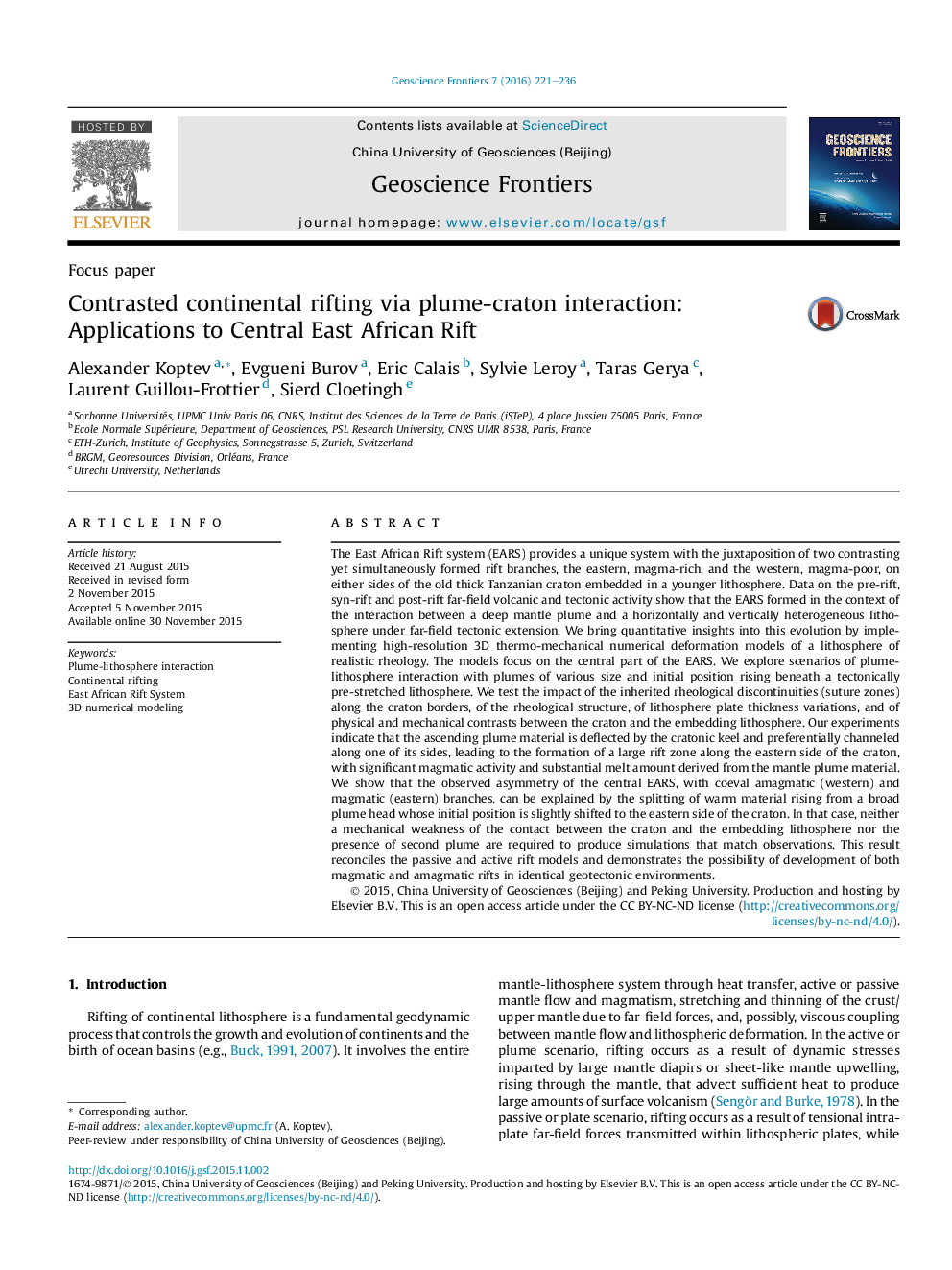| کد مقاله | کد نشریه | سال انتشار | مقاله انگلیسی | نسخه تمام متن |
|---|---|---|---|---|
| 4681541 | 1348856 | 2016 | 16 صفحه PDF | دانلود رایگان |
• Mantle plume is deflected by the cratonic keel and preferentially channeled along one of its sides.
• Simultaneous contrasted continental rifts (magma-rich and magma-poor) form due to plume interaction with a micro-craton.
• We demonstrate the possibility of the development of both magmatic and amagmatic rifts in identical geotectonic environments.
The East African Rift system (EARS) provides a unique system with the juxtaposition of two contrasting yet simultaneously formed rift branches, the eastern, magma-rich, and the western, magma-poor, on either sides of the old thick Tanzanian craton embedded in a younger lithosphere. Data on the pre-rift, syn-rift and post-rift far-field volcanic and tectonic activity show that the EARS formed in the context of the interaction between a deep mantle plume and a horizontally and vertically heterogeneous lithosphere under far-field tectonic extension. We bring quantitative insights into this evolution by implementing high-resolution 3D thermo-mechanical numerical deformation models of a lithosphere of realistic rheology. The models focus on the central part of the EARS. We explore scenarios of plume-lithosphere interaction with plumes of various size and initial position rising beneath a tectonically pre-stretched lithosphere. We test the impact of the inherited rheological discontinuities (suture zones) along the craton borders, of the rheological structure, of lithosphere plate thickness variations, and of physical and mechanical contrasts between the craton and the embedding lithosphere. Our experiments indicate that the ascending plume material is deflected by the cratonic keel and preferentially channeled along one of its sides, leading to the formation of a large rift zone along the eastern side of the craton, with significant magmatic activity and substantial melt amount derived from the mantle plume material. We show that the observed asymmetry of the central EARS, with coeval amagmatic (western) and magmatic (eastern) branches, can be explained by the splitting of warm material rising from a broad plume head whose initial position is slightly shifted to the eastern side of the craton. In that case, neither a mechanical weakness of the contact between the craton and the embedding lithosphere nor the presence of second plume are required to produce simulations that match observations. This result reconciles the passive and active rift models and demonstrates the possibility of development of both magmatic and amagmatic rifts in identical geotectonic environments.
Figure optionsDownload as PowerPoint slide
Journal: Geoscience Frontiers - Volume 7, Issue 2, March 2016, Pages 221–236
